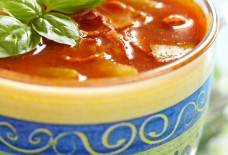Muhammad Ali and the Middle East
With Nasser, 1964
The late Muhammad Ali, who died this weekend, was often described in his heyday as the most famous man on earth. It may well have been true, especially in the Third World, where his embrace of Islam, his willingness to give up his title rather than support the Vietnam War, his staging championship bouts in Kinshasa and Manila, all added to his global fame.
When he announced his conversion to Islam, it was to the extremely unorthodox Nation of Islam, which many Muslims did not accept as Islamic. Later, in 1975, he converted to mainstream Sunni Islam. In 2005, he announced himself an adherent of the Universal Sufism movement led by Inayat Khan.
| Praying at Hussein mosque, Cairo |
Throughout his career, he made many visits to the Middle East, beginning with a visit to Egypt in 1964, where he met with Nasser and visited the High Dam under construction at Aswan. It should be remembered at the time meeting with Nasser was itself cause for controversial, as was his meeting with Mu‘ammar Qadhafi in Libya. It added to his reputation as a rebel.
| At the Kaaba |
In 1972, Ali famously made the hajj. He would thereafter speak of how moving he found the experience.
He would make many other visits to the Middle East. He was decorated by heads of state from Morocco to the Gulf, He generally drew crowds wherever he went. In 1982, having retired from the ring, he held two exhibition fights in Abu Dhabi and Dubai.
In 1986 he visited Egypt for the second time, posing at the pyramids.
This is only a partial catalog of Ali’s love affair with the Middle East, which was very much mutual.
| Receiving a decoration from King Hasan II of Morocco |



